When Japan reopened to the post-pandemic world in the fall of 2022, my heart was brimming with hope that visitors to Japan would realize the folly of spending their trip in over-touristed cities like Kyoto and Tokyo and get away from the crowds to the lesser traveled but equally wonderful places that few overseas tourists visit. That hope lasted all of about 42 days, until I realized how hard it is to get people to change. Kyoto quickly resumed its spot as the most overtouristed city in Japan, and I speculate that the price of the JR Rail Pass skyrocketed to try to keep tourists from wearing a groove taking the Shinkansen between Tokyo and Kyoto. The quality of life of Kyoto residents is suffering, and I suspect more than a few of them long for the days when foreign tourists were shut of the country.
In light of this information, I would like to offer you 5 alternative destinations to Kyoto and Tokyo when you plan your visit to Japan. But Todd… you might say, and yes, I have considered your perspective and concerns so let’s deal with those first by laying down some criteria for my picks.
How I Chose the 5 Alternatives to Tokyo and Kyoto
I understand that many visitors pick Tokyo and Kyoto out of convenience. Tokyo has 2 major international airports and is the port of entry for most foreign tourists, at least those coming from Western countries. So I would never suggest that people coming to Japan through Narita or Haneda airports skip Tokyo entirely. I am just suggesting that you reduce the number of days you spend in Tokyo so you can include one or more of my suggested destinations. Kyoto is equally convenient, accessible by Shinkansen bullet train in 3 hours from the capital with trains leaving literally every few minutes.
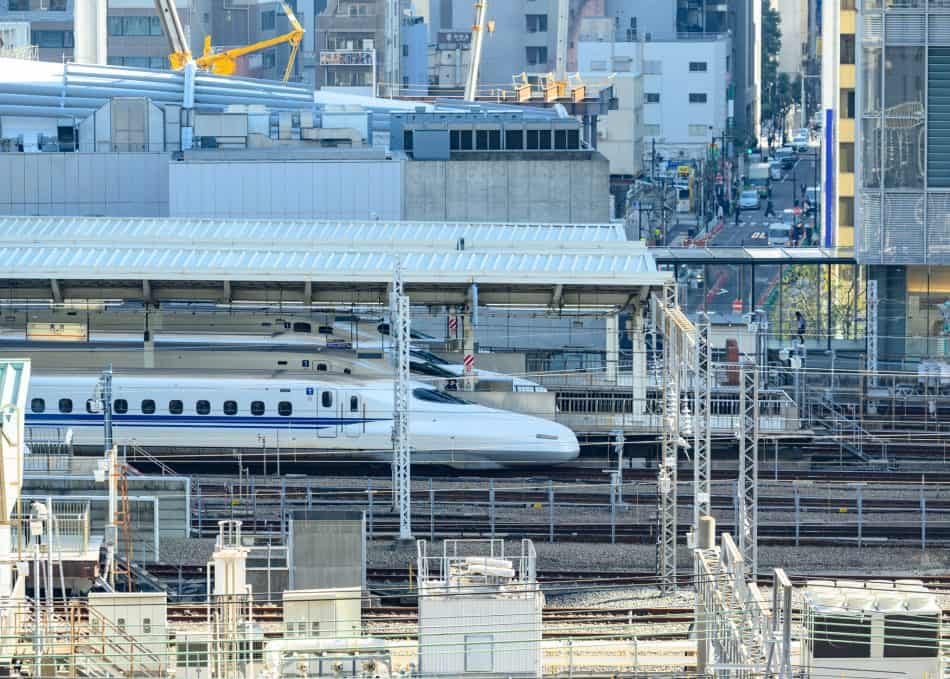
But as you will find out, many great cities are equally accessible from Tokyo on the Shinkansen bullet train. I have selected these 5 cities based on the criteria that they can be reached by Shinkansen bullet train or JR express trains, so you can also use your Japan Rail Pass to visit them without any extra transportation costs.
Furthermore, I understand that first-time visitors to Japan in particular can be very anxious about going to places where English is not spoken. While this is a valid concern in some rural parts of Japan, most large cities in Japan have become English-friendly. Of course, Japan as a country is not English-fluent anywhere (except perhaps around military bases), but you will find that the average Japanese person will bend over backward to help you regardless of the language barrier. In any case, I have selected cities based on my experience with the presence of English-speaking information centers, signage, and general population.
Lastly, many people avoid cities other than Kyoto and Tokyo simply because of the perceived lack of information about these places in English. I can tell you that English-language websites about off-the-beaten-track locations has exploded in recent years, thanks to the tireless efforts of people like Donny Kimball and the writers at websites like Voyapon. Each of the 5 cities has plenty of information in English available through a simple Google search.
So with that out of the way, let’s get to the list, in no particular order.
- Kanazawa City, Ishikawa Prefecture
- Fukuoka City, Fukuoka Prefecture
- Hamamatsu City, Shizuoka Prefecture
- Matsumoto City, Nagano Prefecture
- Hiroshima City, Hiroshima Prefecture
Kanazawa City, Ishikawa Prefecture
Kanazawa has been an up-and-coming tourist destination for overseas visitors since it was connected to Tokyo by the Hokuriku Shinkansen line in 2015. But before that, it had long been a favorite destination for domestic tourists. Since its heyday in the late 16th century, Kanazawa has escaped destruction from wars and natural disasters to remain very similar to how it was hundreds of years ago. Although the Kanazawa Castle keep burned down long ago and was never rebuilt, many castle structures have survived or have been reconstructed using traditional methods. Adjacent to the castle grounds is Kenrokuen Garden, known as one of the three greatest Japanese gardens in the country (and, by extension, the world). Situated within walking distance around the castle are numerous historical neighborhoods where samurai once lived or lively commercial districts where merchants came to be entertained.
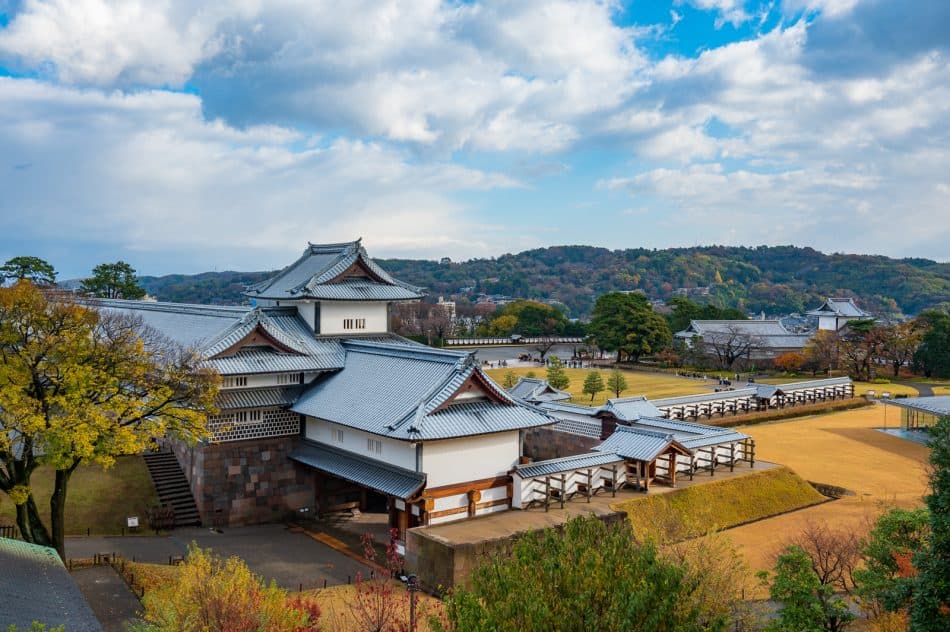
Kanazawa and the surrounding region known as Kaga was ruled by the Maeda family, a powerful samurai family second only to the Tokugawa Shogunate during the Edo Period. With their vast wealth, they developed the traditional arts that are still deeply embedded in modern Kanazawa culture. Both modern and traditional art lovers, those who enjoy crafts and those who enjoy performing arts, will find something amazing to enjoy in Kanazawa.
Foodies will appreciate Kanazawa’s port on the Sea of Japan which brings fresh hauls of seafood on a daily basis. Ishikawa Prefecture is known for the quality of its seafood, and you’d be foolish not to sample the city’s array of offerings, including the fresh crabs available for a few months of late autumn and winter. Ishikawa also produces an array of produce and rice, elements of the local “Kaga Cuisine,” and a variety of sake available to drink.
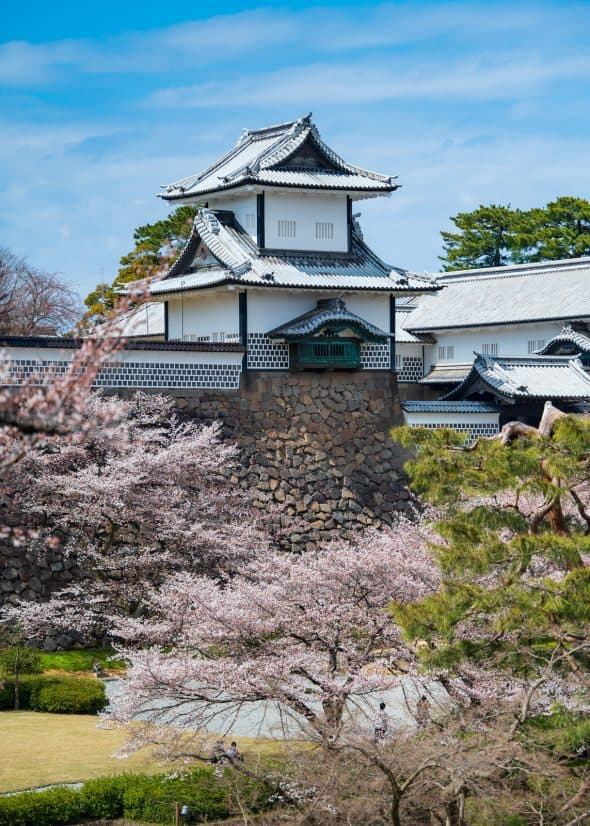
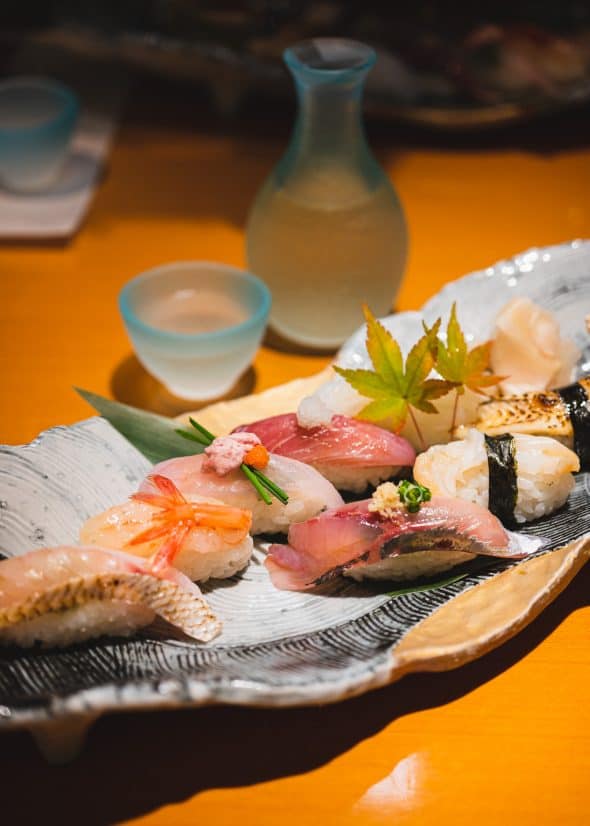
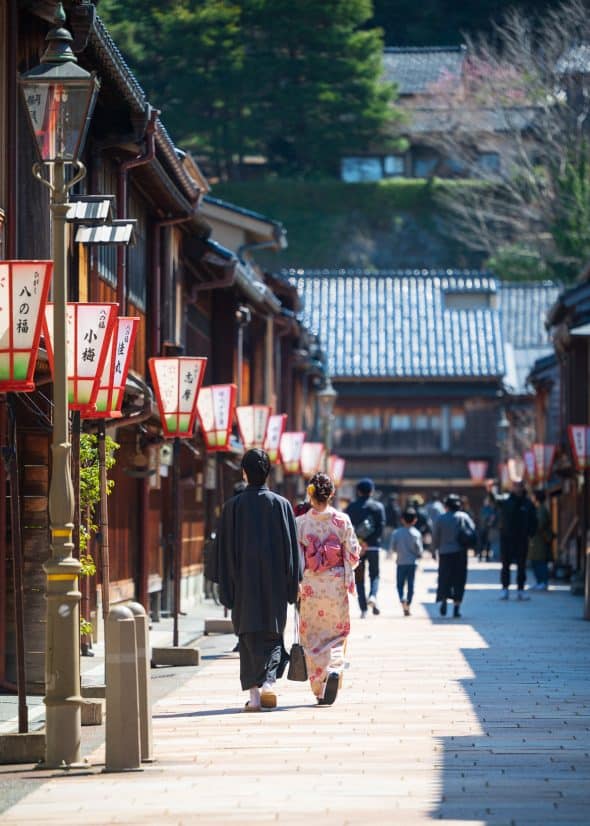
To put it simply, Kanazawa is a more compact and easy-to-navigate version of Kyoto with a fraction of the crowds and equally impressive historical sites. Add to that its deep artistic roots and connections to traditional Japanese culture and the fact that it can also be reached by Shinkansen in 3 hours from Tokyo (and about 2.5 hours from Kyoto on the Limited Express Thunderbird), and you have the perfect alternative city to spend several days in.
Visit Kanazawa – Official Tourism website
Fukuoka City, Fukuoka Prefecture
Visitors from Asia who have easy access to Fukuoka Airport probably already know about this lively city on Japan’s western island of Kyushu. But if you are coming from eastern Japan, you might think Fukuoka is a bit out of reach. In fact, you can reach Fukuoka by bullet train, although on the fastest train it can still take 6 hours from Tokyo. Perhaps access by train is better if you are coming from Kyoto, which is only about 3 hours away. Nonetheless, low-cost flights are available from Tokyo that can get you to Fukuoka airport in a little over an hour, and the airport is a very convenient 10-minute train ride from Hakata Station in the heart of the city.
Fukuoka’s history as a city that has been involved in foreign trade with countries like China, Korea, the Netherlands, Portugal, and others for hundreds of years has made it a city that is exceptionally welcoming to foreign visitors. I’ve also found that residents of Kyushu in general, tend to be friendly and generous, and Fukuoka is certainly no exception.
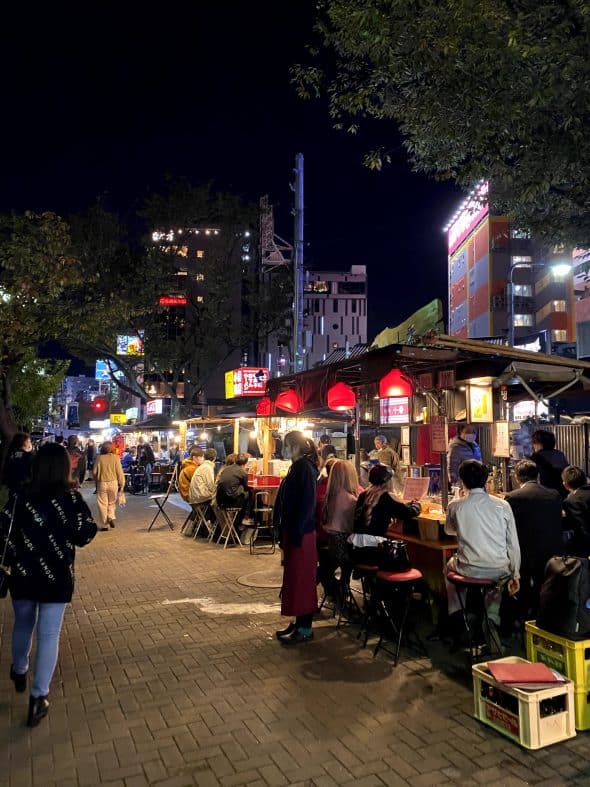
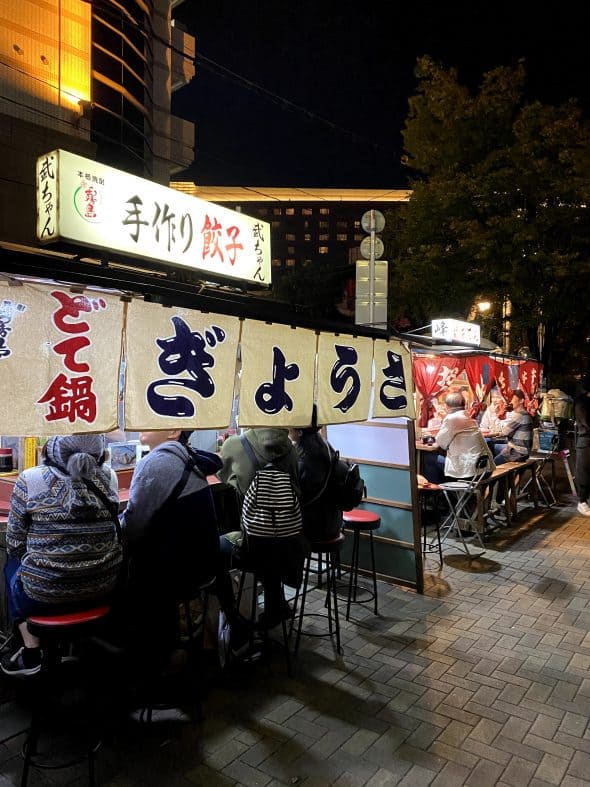
To get an idea of Fukuoka hospitality, you must try one of Fukuoka’s best traditions: eating at a yatai. From around 6:00pm, mobile stalls are set up along the business and entertainment districts, offering a huge variety of foods to hungry businesspeople after a hard day’s work. There is a yatai culture that encourages people to introduce themselves to the people they are sharing the stall with, encouraging banter between guests. Often the owner of the stall will join in and before long, everyone is having a great time. As Fukuoka people are very friendly, the language barrier is rarely an issue for long. To fully enjoy the yatai, eat a little at one stall before moving on to try a few others, giving you the opportunity to try more types of foods and make more new friends in the process.
As a tourist destination, Fukuoka has a number of beautiful parks, temples, and shrines. It is quite easy to navigate on public transportation, and you can even take ferries to nearby islands from Hakata Port to destinations such as Iki and Tsushima (made famous in the video game Ghost of Tsushima). Seafood lovers should certainly visit Itoshima, which has seasonal oyster huts where you can enjoy fresh oysters to your heart’s content. In general, Fukuoka is a great home base for day trips around Fukuoka Prefecture and even destinations in nearby Saga and Nagasaki.
The Official Guide to Fukuoka City
Hamamatsu City, Shizuoka Prefecture
You’ve never heard of Hamamatsu City before? I doubt that would be a surprise to even most Hamamatsu residents, but you probably have heard of companies like Yamaha, Suzuki, and Roland, who all have headquarters in Hamamatsu. With headliners like those, you can bet Hamamatsu is a musical city, and for lovers of music, it is certainly one destination you do not want to miss out on.
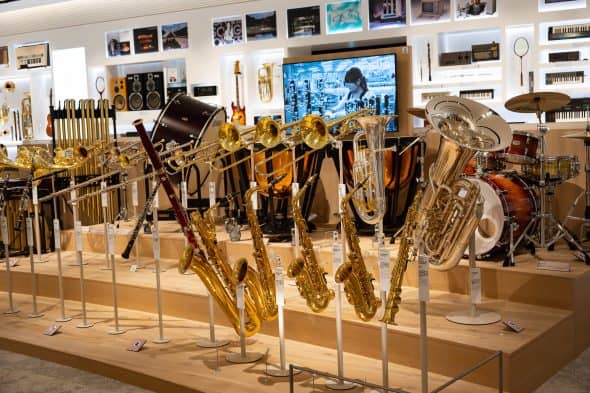
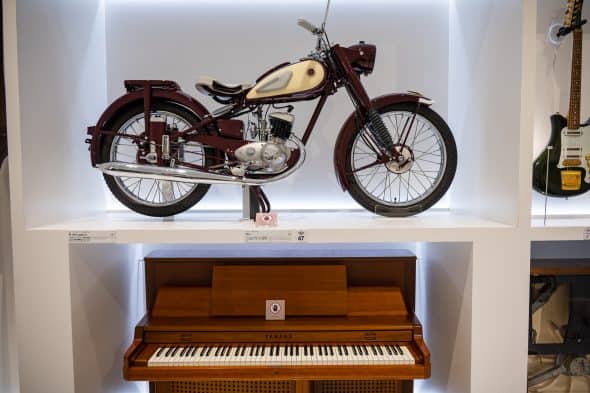
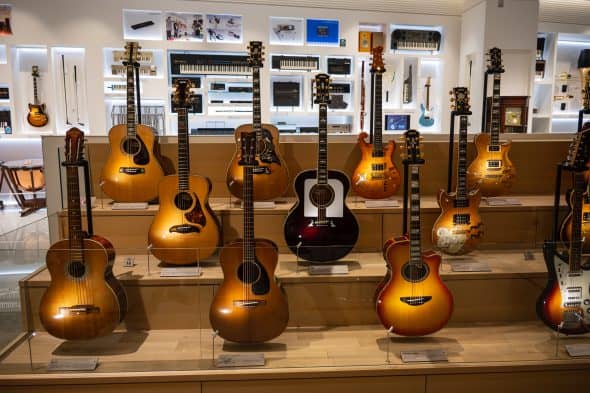
One attraction music lovers cannot miss is Yamaha Innovation Road, a museum/showroom of Yamaha products located at its headquarters. Although you need to make a reservation to get in (use a website translator to get a basic understanding of the information), the process is simple, and there is no charge to enter. Once inside, you’ll not only be able to see Yamaha’s full line of musical instruments (and other innovations, but let’s focus on the instruments for now), you can actually play most of them. With soundproof rooms available, you can do your best impression of Jimi Hendrix, Flea, or John Coltrane using Yamaha’s top-of-the-line instruments. And out on the floor of the museum, you can sit down and play a concert grand piano, an instrument that costs as much as some people’s homes.
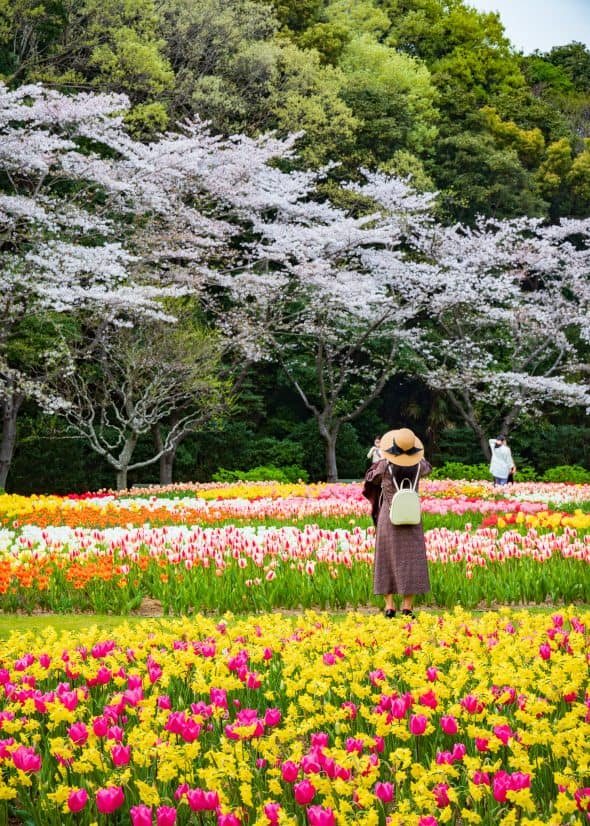
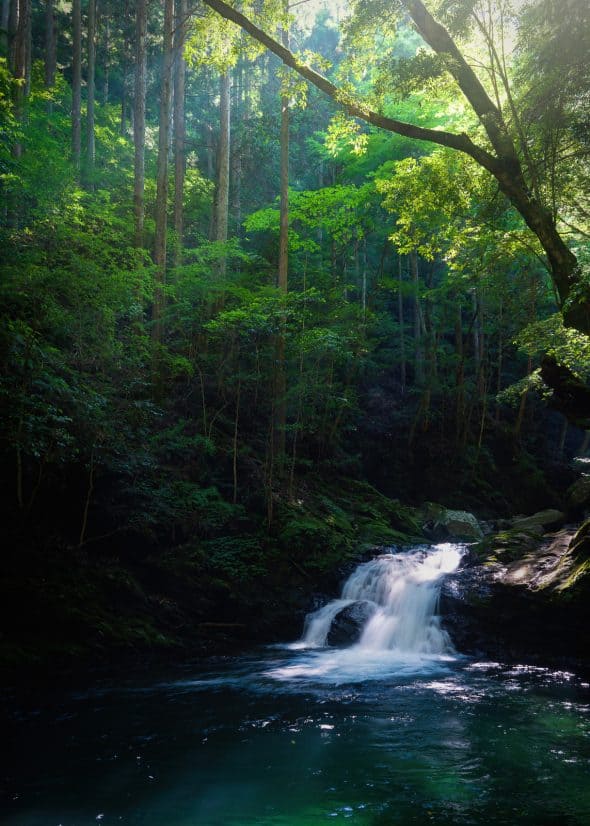
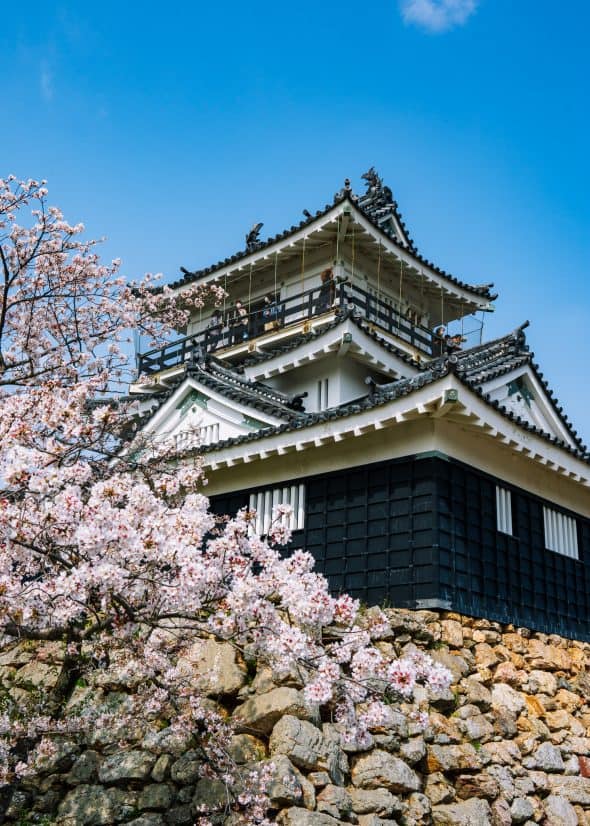
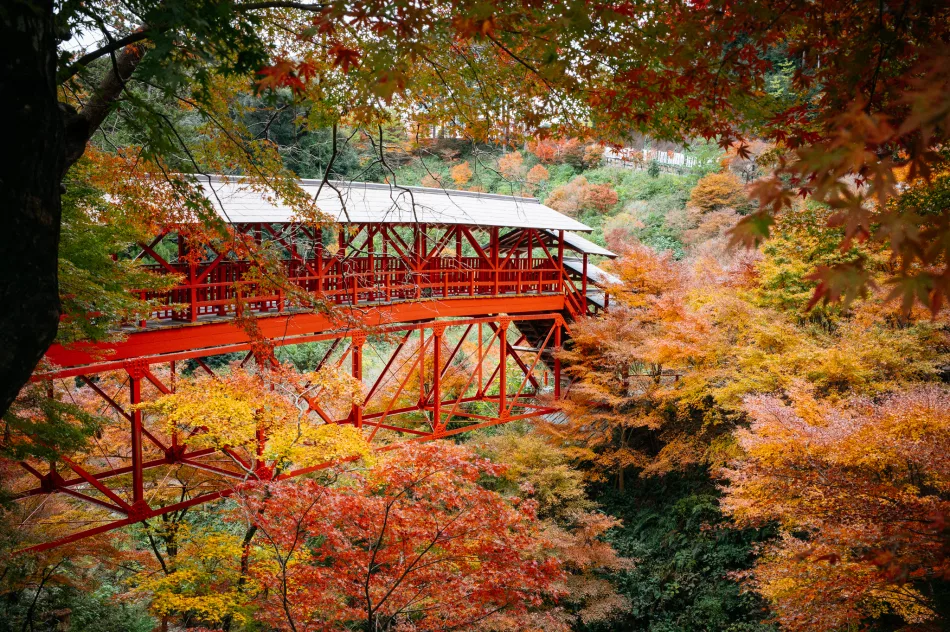
Aside from musical attractions, Hamamatsu has a surprisingly wide array of other things to do and see. Due to its large footprint, including mountains, coastline, and half of one of Japan’s largest brackish lakes, Lake Hamana, you’ll find trekking trails, hidden shrines, lake cruises, cycling routes, sand dunes, flower and fruit parks, and much more. History buffs will enjoy Hamamatsu Castle, where Tokugawa Ieyasu once resided before he conquered all of Japan to become the first Shogun of the Edo Period. The castle grounds are particularly spectacular in the spring with hundreds of cherry blossom trees in bloom and locals out enjoying their hanami cherry blossom viewing parties.
Furthermore, Hamamatsu is on the Tokaido Shinkansen line, roughly halfway between Tokyo and Kyoto. So if you insist on ignoring my advice and keeping both Tokyo and Kyoto on your itinerary, you can at least stop in between and spend a few days enjoying the plethora of fun Hamamatsu has to offer.
In Hamamatsu – Hamamatsu City Visitor Guide
Matsumoto City, Nagano Prefecture
Surprise, Matsumoto isn’t on a Shinkansen line, but it can be reached easily by the Limited Express Azusa train from Shinjuku in Tokyo in less than 3 hours. This city of southern Nagano Prefecture is attractive in its own right with its star attraction Matsumoto Castle, but it is also a gateway to a spectacular array of must-see destinations for many visitors to Japan, including the Jiyokudani Snow Monkey Park, Hida-Takayama, Kamikochi, and the Japan Alps, and several well-preserved post towns on the old Nakasendo Road.
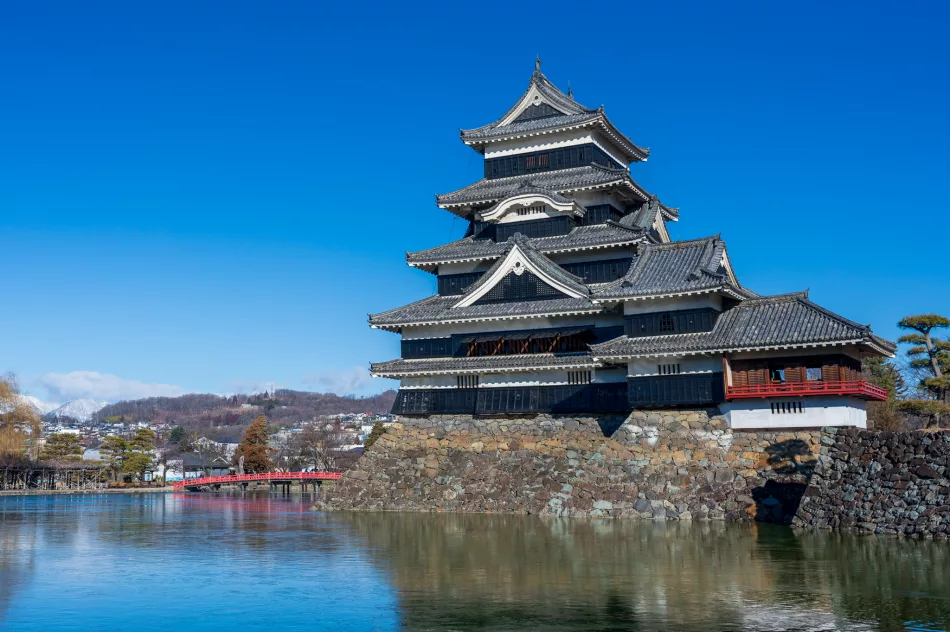
Modern artist Kusama Yayoi grew up not far from Matsumoto, and her work is showcased at the Matsumoto City Museum of Art. At times, you may find special limited exhibitions of her work there, complete with limited edition goods you won’t find anywhere else in the world. The above-mentioned Matsumoto Castle, the “Crow Castle,” is one of the 12 remaining original castles in Japan and arguably the most distinguished, especially in the winter when its black facade stands out so elegantly against the white-capped Japan Alps. Over the past few years, Matsumoto’s growing popularity with foreign tourists has made it much more English-friendly, and even I was surprised to notice how many people I encountered casually speaking in English on the streets when I visited earlier this year.
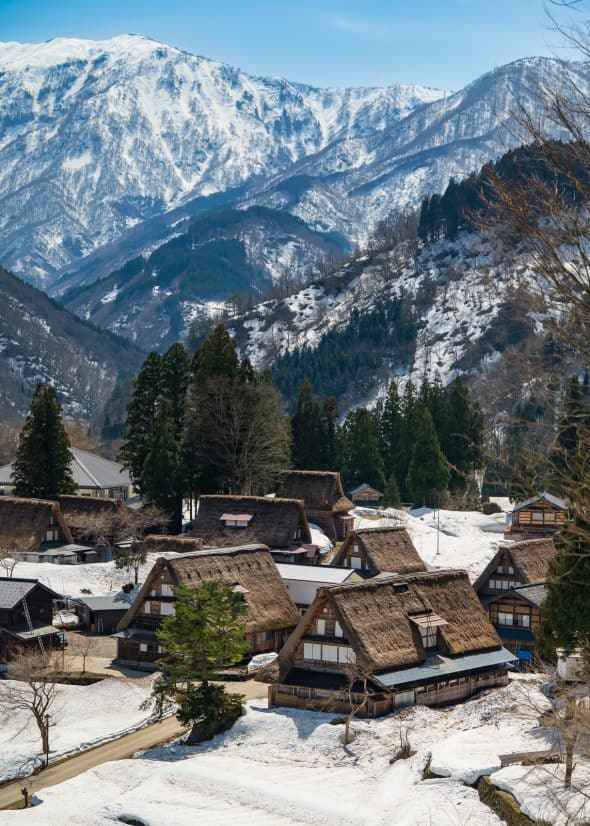
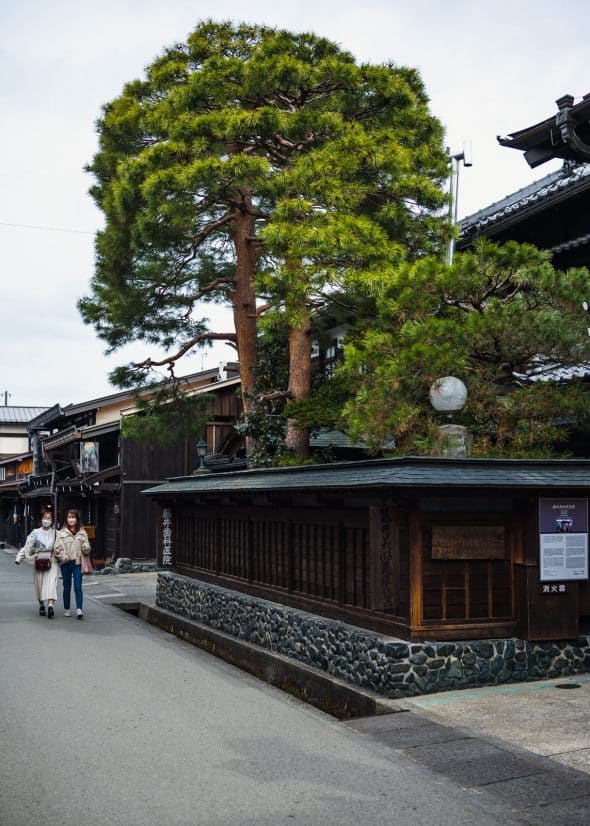
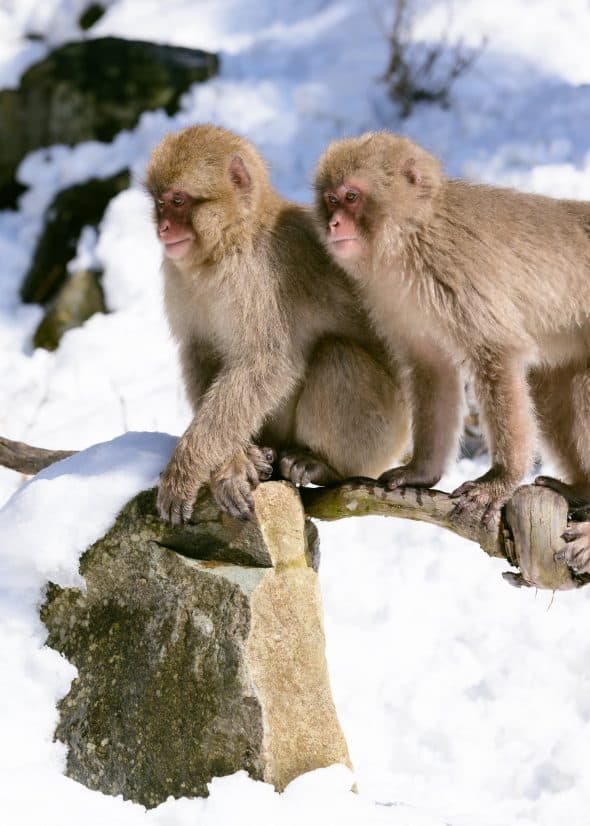
If you really want to make the most out of your time in Matsumoto and knock off a couple of the cities on this list in one go, consider the Mitsuboshi Kaido “Three-Star Road”, which starts in Matsumoto and takes you through some spectacularly scenic and interesting towns and villages in the mountains on your way to Kanazawa City. This journey in itself can easily take 5 days or more, and you’ll visit some places along the way that will make you forget Kyoto completely, like rustic Gokayama Village with its thatched roof buildings and frozen-in-time Takayama nestled in the mountains.
Visit Matsumoto – Official Travel Guide
Hiroshima City, Hiroshima Prefecture
Hiroshima does sometimes sneak its way into some people’s itineraries, although many people try to squeeze it in as a day trip from Kyoto or at best, an overnighter. It is extremely convenient to access as a major station on the San’yo Shinkansen line, so I can’t blame people for trying to make Hiroshima part of their busy Japan itinerary. The truth is Hiroshima has much more than meets the eye and deserves three, four, or even five days to explore the surrounding area using Hiroshima as a home base.
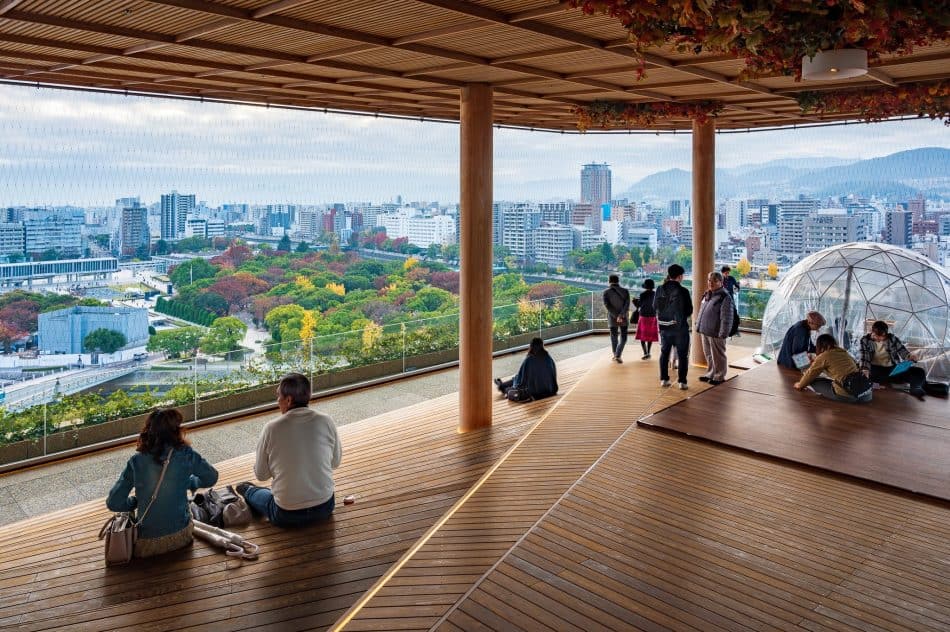
Obviously, the Hiroshima Peace Park and Memorial Museum are to be included for every visitor. The incredibly strong feelings created in me by its disturbing exhibits linger with me years later and remind me constantly of the horrors of nuclear war, something we as a planet cannot afford to forget. But apart from that poignant site, Hiroshima has many lovely parks, a castle, and a legendary food culture. The okonomiyaki war between Osaka and Hiroshima is real, and for those who side with Hiroshima, the city is certainly heaven. But more than this iconic dish, Hiroshima has other fantastic and innovative restaurants and the best fried oysters I have ever had.
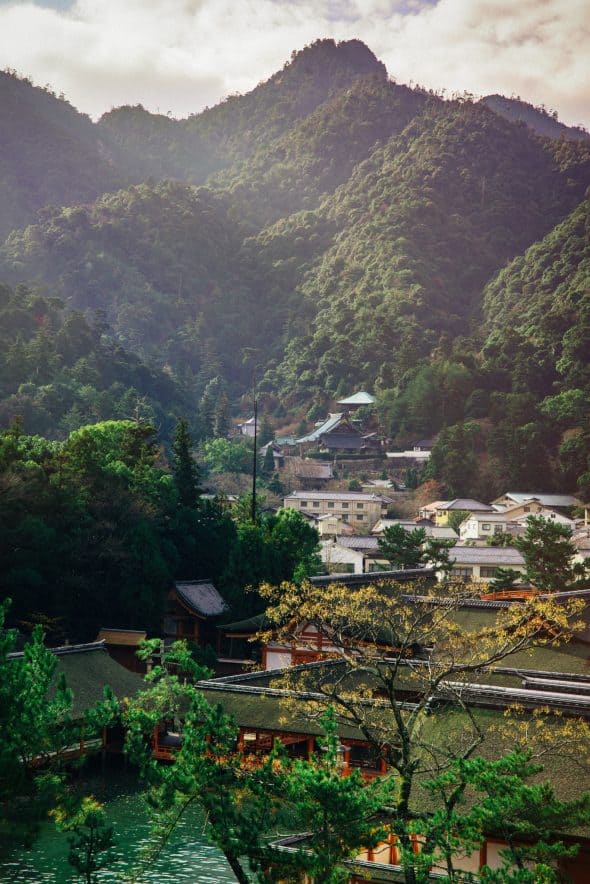
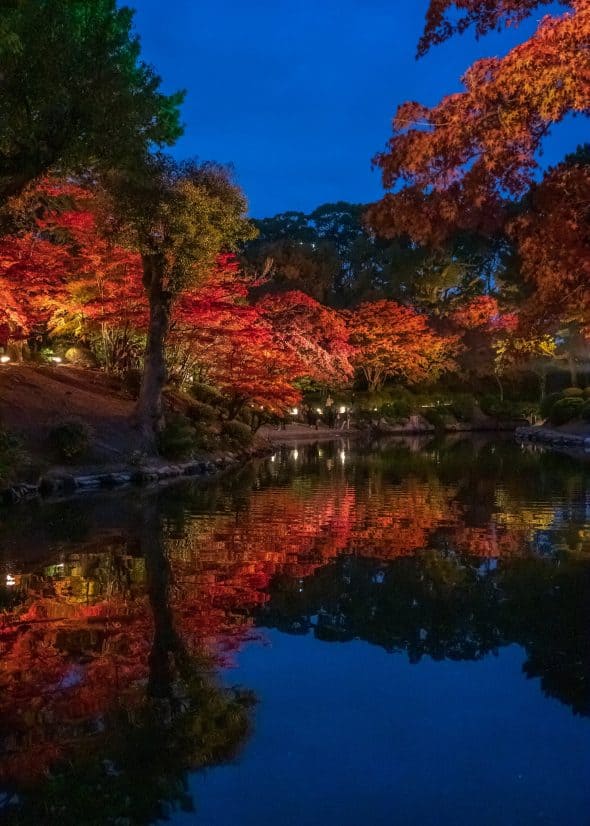
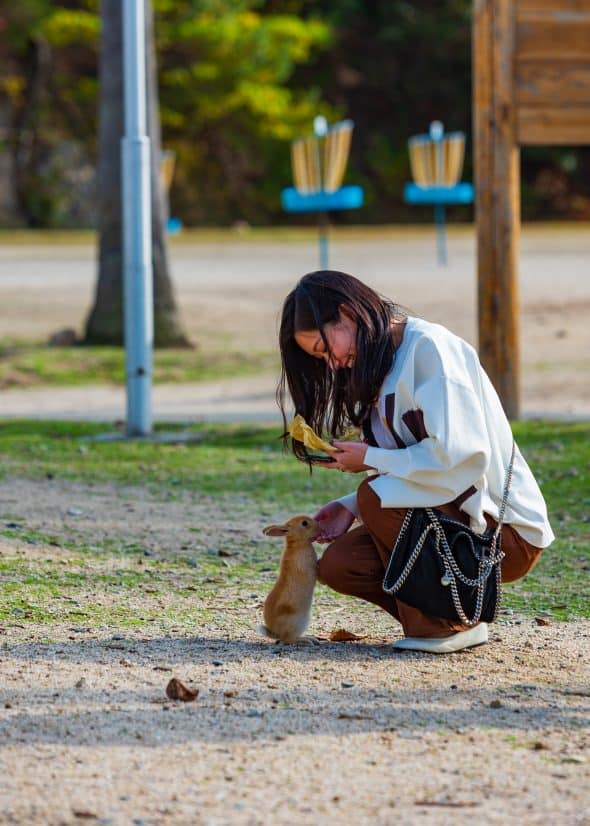
Surprisingly, Hiroshima has only one subway, so public transportation around the city is focused on streetcars and buses. The Hiroshima Bus Terminal is a hub for getting you to attractions around the area, including Miyajima Island, Onomichi (for those interested in cycling the Shimanami Kaido to Shikoku), the five-arched Kintai Bridge in Iwakuni, and Okunoshima, the “Island of Rabbits,” to name a few. There is even a heavily discounted bus route to Matsue City in Shimane Prefecture, which is a mere 500 yen (I mention it because the discount has been in place for 3 years and counting and is probably not going away anytime soon). You’re also a day trip away from Okayama City, home of another of the 3 greatest Japanese gardens, Korakuen Garden, and the equally fascinating Okayama Castle. A set of discounted bus passes is available that will make your transportation all the more affordable as you spend a few days enjoying all of Hiroshima and its surrounding area.
Dive! Hiroshima – Official Guide to Hiroshima City
Sustainable Tourism in Japan
So there you have it, 5 cities that are perfect alternative destinations to the typical Japan trip that includes just Tokyo and Kyoto. Of course, you are only going to benefit by incorporating some of these ideas into your itinerary and seeing more of Japan than 90% of the foreign tourists who visit here. But I have an ulterior motive which I am not ashamed to share with you because it is quite serious.
The fact is that while Japan has only begun to establish itself as a global tourist destination, over-tourism in some areas has already done major damage. Kyoto is literally an ancient city, and it wasn’t built to accommodate train loads of daily visitors or endless streams of tourists on its narrow streets. You only need to spend a day there during a peak tourism season to understand what I mean. And while Kyoto is choking on tourists, other Japanese cities and regions that are equally charming or beautiful or historic are being almost completely ignored. Japan is not homogenous. Every region has some special food or tradition or cultural event that makes it unique from every other region. But for those regions where the population is aging, young people are fleeing for jobs in bigger cities, and tourists rarely show their faces, sustaining their lifestyles, and in many cases, their unique traditions and cultures will not be possible forever. In the very near future, Japan will lose the knowledge and practice of some traditions forever.
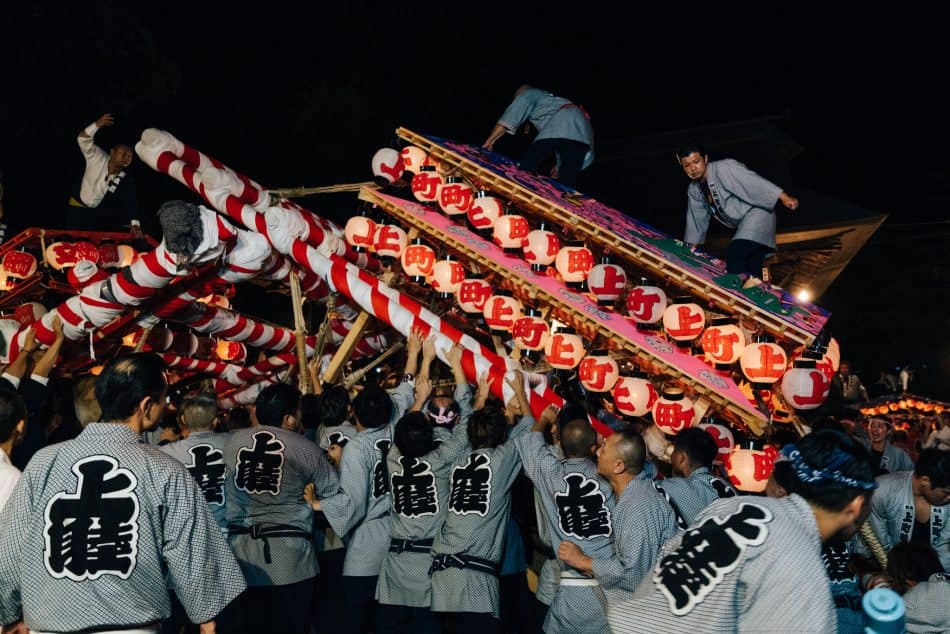
And yet, you can help prevent this. By spreading your tourism money around to lesser traveled regions, you simultaneously help reduce the harm of over-tourism and help the regions that are in economic need. And you only reap rewards by experiencing Japan in a fuller, more holistic sense.
I’m not asking you NOT to visit Kyoto or Tokyo; I’m simply suggesting that you spend less time in those cities and take some time to visit lesser-traveled areas of Japan. If you don’t get to see everything you wanted to see in Tokyo or Kyoto, don’t worry, you can always come back again, and those cities will still be here. For other villages and small towns scattered around the country, I’m afraid I can’t say the same with certainty.
